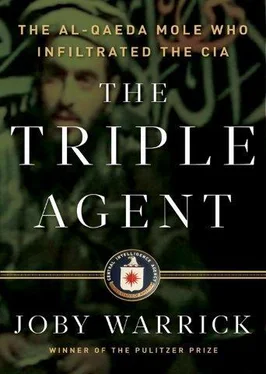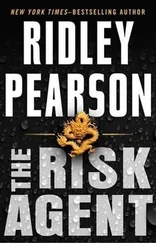The successful targeting of Mehsud had only served to underscore the urgent nature of the work that still lay ahead. For one thing, Mehsud’s “devices” remained unaccounted for. All summer, as the CIA searched for the Taliban leader, thousands of Pakistani troops backed by helicopter gunships swept the Taliban’s valley strongholds, picking off the forts and hideouts one by one. By the time the campaign ended, the Pakistanis were sitting on a mountain of small arms and enough explosives to supply a madrassa full of suicide bombers. But they found no trace of a dirty bomb. The radiation detectors never sounded at all. The CIA’s counterterrorism chiefs puzzled for weeks over the meaning of the missing devices. Many Taliban survivors had fled into neighboring North Waziristan to take shelter with that province’s dominant militant group, the Haqqani network. Had they taken their bombs with them? Had it all been some kind of trick? On this, the classified reports were silent. There was no further talk of devices in the agency’s intercepts, and back in Washington, Obama administration officials made no mention of the dirty bomb scare. Publicly, it was as though the threat had never existed.
More ominously, Baitullah Mehsud’s Taliban faction had quickly regrouped and was veering off onto a dangerous new course. The missile strike on August 5 had created a temporary leadership vacuum and touched off several bloody rounds of street fighting among Mehsud’s would-be successors, but now Baitullah’s charismatic cousin, the recklessly ambitious Hakimullah Mehsud, was firmly in charge. While Baitullah Mehsud had contented himself with waging attacks against Pakistani soldiers and police, his cousin was more virulently anti-American and also more willing to commit his forces into alliances with al-Qaeda and other militant groups attacking American troops in Afghanistan. Greater numbers of Mehsud fighters were signing up with al-Qaeda’s Shadow Army, a paramilitary force led by a Libyan commander, Abdullah Said al Libi, that wore its own distinctive uniform and carried out lightning raids on military targets on both sides of the border. These were al-Qaeda’s new shock troops, and they were drawing funds and recruits from as far away as Saudi Arabia and Kashmir.
This was Panetta’s dilemma. The CIA’s missiles were finding their marks, but it wasn’t enough. Slain commanders were being quickly replaced, often with younger leaders with more extreme views and international ambitions. Al-Qaeda was adapting, commanding a widening network of committed followers from the region’s patchwork of militant tribal groups. Meanwhile the terrorist group’s most senior leaders, including Osama bin Laden and his operational commander, Ayman al-Zawahiri, were coordinating strategy from secure hiding places. Something more was needed to flush them out.
In the late summer and early fall Panetta and his team finalized the detailed plan the director would present to the president and his National Security Council, which was in the middle of a months-long review of its Afghanistan strategy. Panetta had a long wish list, but the lead item was the most critical one: more robot planes—lots of them. Not just Predators, but the newer, more powerful Reaper aircraft, along with operators and hardware to support them. Panetta wanted to dramatically increase the pressure on al-Qaeda, not only with increased firepower but also with blanket surveillance, enough human and mechanical eyes watching the tribal region around the clock to detect the movement of even small groups of fighters. It would be “the most aggressive operation in the agency’s history,” Panetta later said, and its chief aim would be to find and destroy the graybeards who were the root cause of all the trouble.
“The leadership of al-Qaeda—from bin Laden down to the top twenty—these guys are located in a place that is our primary target,” Panetta said. “And we’re the point of the spear.”
When it was time to make his case, Panetta made the trip to the White House to deliver his pitch to President Obama in person.
“Mr. President,” he began, “in order to really accomplish our mission, these are the things I need.” He proceeded to describe al-Qaeda’s resilience in the tribal region and his plan for ratcheting up the pressure, denying the terrorists even the smallest space to hide or regroup.
Obama looked at Panetta thoughtfully for a moment and turned to his aides.
“We’re going to do what Leon wants,” he said.
The discussion was over.
It would take months to deploy the new orbits, as the systems of unmanned aircraft and operators were called, but the agency proceeded immediately to put pieces of the new plan into place. CIA targeters would be needed not only in Langley but also nearer to the front line, to coordinate a highly specific search for senior al-Qaeda leaders.
The limits of the new strategy were understood. The Predator was an impressive machine, but air power and advanced robotics could accomplish only so much against a widely dispersed enemy that hid among the local population in Pakistan’s tribal region. The same kinds of technology had helped turn the tide against Iraq’s insurgents, but there was an important distinction: In U.S.-occupied Iraq, U.S. Special Forces commandos had free rein to go anywhere in the country. They worked in tandem with the drones and could rapidly act on new intelligence during any time of day or night, inserting small teams on the ground to kill or capture. No such possibilities existed in Pakistan.
There was yet another problem. To eliminate al-Qaeda’s generals, the CIA first had to find them. Nine years after Osama bin Laden’s terrorist attacks on New York and Washington, U.S. intelligence officials had no idea where he was.
It was even worse than the public knew. In the years since September 11, several U.S. officials suggested in interviews that the CIA knew roughly where Osama bin Laden was hiding. Those claims had been wishful thinking, at best. The last credible report of a bin Laden sighting came in 2002, shortly after the Saudi terrorist fled from his Tora Bora stronghold on the Afghanistan border into Pakistan. Since then there had been nothing: no near misses, no tangible leads, not even a single substantive tip. Defense Secretary Robert Gates, in a moment of candor, acknowledged in a 2009 television interview that “it has been years” since the bin Laden case had been active.
“We don’t know for a fact where Osama bin Laden is,” Gates said. “If we did, we’d go get him.”
Occasionally, leads emerged that would revive interest in the hunt. One of the most promising involved an al-Qaeda courier reputed to deliver messages between the terrorist group’s operational commanders and bin Laden, who studiously avoided telephones and electronic messages. Nearly all the CIA’s targeters, including Jennifer Matthews and Elizabeth Hanson, had been caught up in the search for the courier in some way. After two years of hard work and lucky breaks, the agency finally deduced the man’s name in 2007; yet two years later, it had no idea where to find him, or whether he was even alive.
The failure to find bin Laden was the fly in the ointment, the big black asterisk that overshadowed what had been the greatest tactical success in the CIA’s history: the 2001 overthrow of the Taliban and the routing of al-Qaeda in Afghanistan. Even as New York’s twin towers still smoldered, the agency had led an offensive so overwhelming that only a few hundred foot soldiers and a handful of senior leaders managed to slip away, leaving thousands of others dead or in prison camps.
The Taliban’s defeat had been engineered by a small group of CIA officers who had been spoiling for a chance to go after bin Laden since long before he dispatched his teams of hijackers to crash airliners into buildings in New York and Washington. With their input, within hours of the September 11, 2001, attacks, the CIA director George Tenet had a plan on President Bush’s desk that would allow the White House to immediately go on the attack against al-Qaeda in Afghanistan, rather than wait for the Pentagon to organize a conventional military campaign. In a meeting with the president on September 13, J. Cofer Black, then the director of the CIA’s Counterterrorism Center, described how a force of CIA-led commando teams and friendly Afghan Northern Alliance fighters could defeat the planners of the September 11 attacks in a matter of weeks.
Читать дальше












